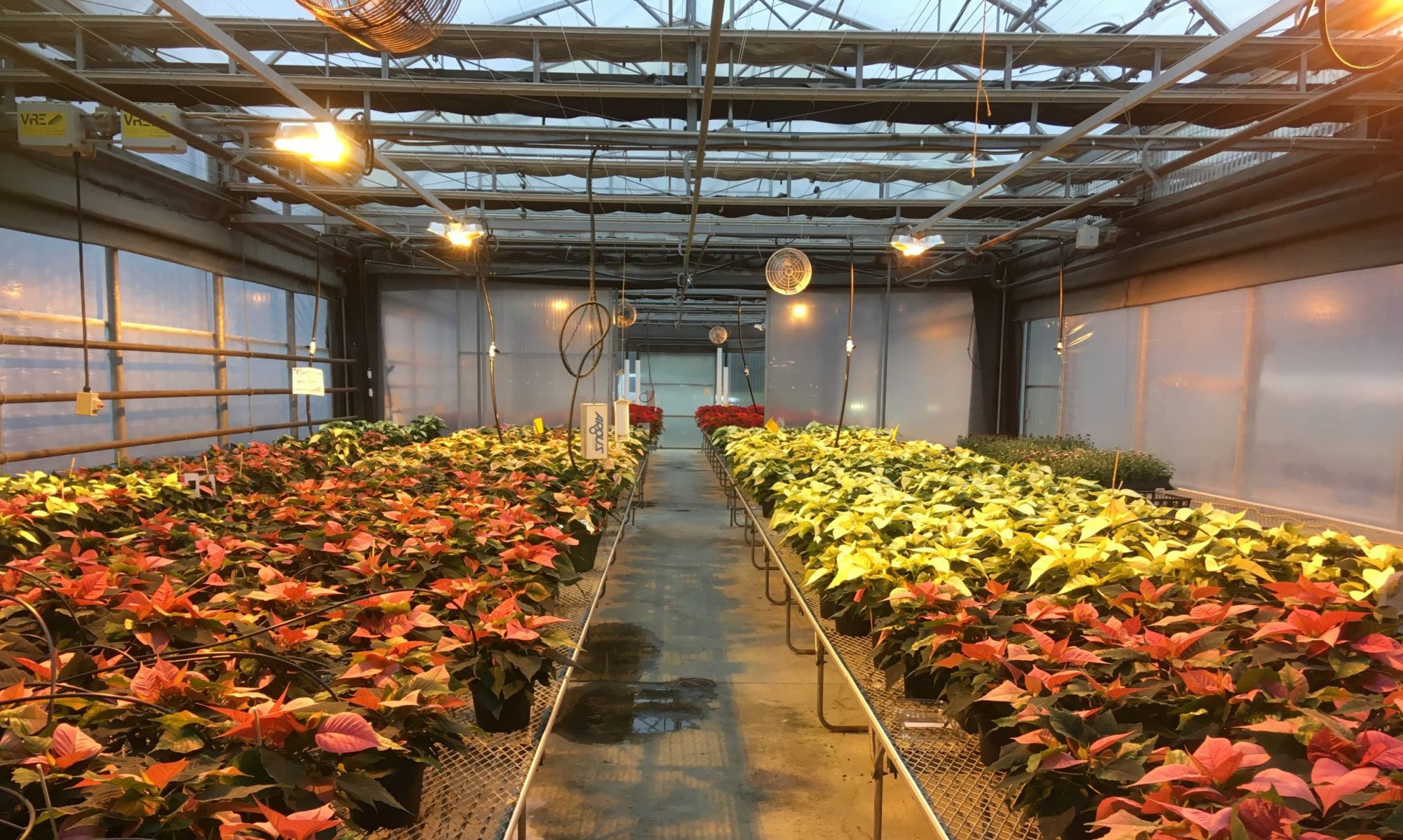
To order poinsettia online to go:
https://tradesappliedtech.viu.ca/horticulture/form/poinsettias
Environmental Conditions:
This week we had typical November weather, cloudy and rainy with a few glimpses of sunshine. This week we also experienced our first snow fall warning, however, only higher elevations saw any snow. I tripled checked the Argus settings to ensure the snow load settings were correct.
Day: Heating Setpoint 20C | Cooling Setpoint 22C
Night: Heating Setpoint 18C | Cooling Setpoint 20C
Supplemental Lighting:
We are running a 9-hour day and a 15-hour night to trigger the plants into generative growth. This is essentially what is going to turn our poinsettias red, white, or pink. We just finished week 5 of our blackout period and are seeing colour change throughout the crop and the plants trend towards generative growth.
Hours of Black Out: 15 hours – 5pm to 8am
Nutrient:
EC target is 1.5 – 2.0 pH target is 5.7 – 6.3
EC: 1. 5 – 1.8
pH: 5.4 – 5.7
Watering/Fertilizer:
I watered the poinsettias on Monday with our high Ca fertilizer, which I am alternating with the Mg fertilizer. I spot watered on Friday and anticipate watering again on Monday. Plants, like Titan Pink in zone 3, dry down the fastest because of their large vegetative canopy, established root systems, and proximity to the fans.
It’s worth noting that the pH is quite low in some cultivars and we should switch fertilizers or clear water flush to avoid crop health issues due to poor nutrient availability at lower pH.
Observations:
- This week we saw lower fungus gnat populations again, indicating that our water management and biological treatments are working. In addition, our plants have strong established roots which have some integrity against fungus gnat larvae which like to feed on fine root hairs. We also saw lower whitefly numbers from last week also indicating to us that the biolgocials we applied are doing their jobs. Remember it takes time for our biological populations to establish therefore, there will be a lag time in their impact on the crop. If the environmental conditions are appropriate and there is a good source, we can anticipate that our biological populations will become established in our greenhouse.

2. Students took height measurements this week and our entire crop average (all cultivars) are 33cm and since we do not have data from last week, we do not know how many cm they are growing each week. However, we do know that as we near the end of our production schedule the heights will taper off, especially since we are going to lower the temperatures near the end to harden off the plants for transport and “set” the colour. If we could base our decisions on previous growing years we could anticipate the plants to grow 1cm-1.5cm a week and we have 2 weeks left until sales so, our final crop average will be 35cm – 36cm. Our final target was 40cm.
3. An observation I have made based on my experience over the past two (2) week, as we head into the final stages of production, is that since switching to generative growth the crop requires less water than in the vegetative growth. In the generative stage we have a greater difference between day and night temperatures and an overall lower 24hour average temperature. In short, our plants are not producing lush vegetative growth and are prioritizing generative growth based on the growing environment we have created.
4. Our 4” crop is delayed in colour response and are overcrowded in their trays. This upcoming week we will need to do some space management while we prepare for sales in week 49/50.
5. Moving forward we will continue to monitor plant heights, EC/pH, pest pressures and environmental conditions to make decisions to impact plant health as we head into the final growing stages of our production schedule. After our next face to face classes, students will be able to complete the sale sections of their blogs with this information.
6. As I mentioned above, in our last two (2) weeks of production we lower temperatures to harden off our plants and prepare our plants for transport. The cooler temperatures are going to allow for better transport of our plants since drop in temperature will make the branches sturdier. The lower temperatures will also “set” the colour and make it more vibrant. We will also reduce feed in the last 1.5 weeks of production so that we don’t send poinsettias with salt build up to our customers.
